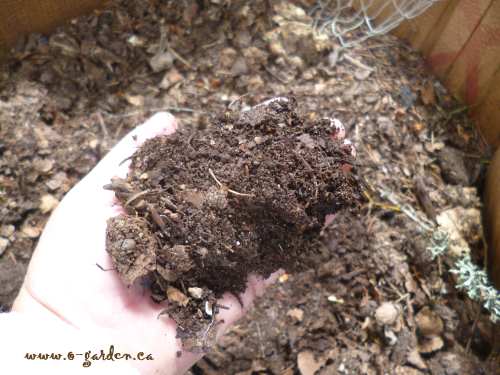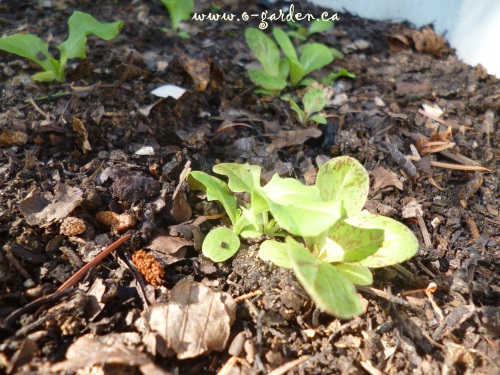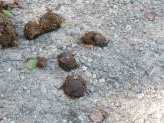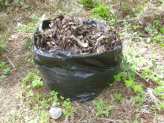Hot Compost
Thermophilic Composting kills weed seeds and pathogens
Contrary to popular belief, it's not the heat that you are adding. The heat of a good working compost pile is due to the activity of millions of tiny organisms, the side effect of this heat is that it kills many unwelcome pathogens and most weed seeds.
Quite often, after a winter of adding kitchen scraps to a compost pile, it doesn't seem to be doing anything. A stagnant pile is one that is in stasis, so it's up to you to add something to it to get those populations of micro-organisms up and running.
How do you do this?
Well, layering the kitchen scraps with mature compost will add the micro herd, and also adding a few other ingredients will assist with getting them to start really burgeoning.
I lined this wire bin with cardboard because the pieces were already partially rotted down, and small enough to fall through the holes.
Some of my favorite things to add in small amounts are Glacial Rock Dust, and something that's a lot cheaper and easier to find; spoiled grain or flour.
Any kind of milled grain will do; spoiled and moldy chick scratch or other animal feed, alfalfa pellets or mash, flour that has gone rancid or has had vermin get into it; it's all good. The smaller the pieces, the faster it will work to get a hot compost really going.
The first step is to take your compost bin apart and start mixing in some of the mature compost that you might on have on hand.
Or, lacking that, a couple of shovelfuls of leaves from under a tree, or soil from your garden bed. Anything that contains many of the crucial local microorganisms such as algae, bacteria, yeast and fungi, along with some of the larger creatures like earthworms, especially their egg capsules.
Add any other vegetable matter like freezer burnt packaged vegetables or fruit, or even pickles.
If you have animals around, like bears, the best time to make one of these kinds of compost piles is before they emerge from hibernation in the spring, particularly if you're getting rid of fruit or vegetables in any kind of quantity.
A screen over the top will keep out smaller animals, such as cats or skunks, but nothing can prevent a bear from tearing it apart.
Then, we wait; the heating of this kind of pile depends on two things (apart from the raw materials); moisture, and air. If the air flow is adequate into the pile, and it's moist (the best description is that of a wrung out sponge) then you can expect the temperature to rise within a few days.
If the pile is too dry, sprinkle with some
compost tea
or
Liquid Organic Fertilizer
to get it moist enough to start working. These ingredients also contain Nitrogen, which the micro herd needs.
After two weeks, the pile itself will be steaming noticeably on cooler mornings, and then it will start to cool down.
Stirring it up a bit will start trigger more heating, and then after a month, the compost will not resemble any of the ingredients; it will be Black Gold, and ready to use, or leave in bags to mature a bit.

Later; this pile continued to heat for several weeks, and in time it's created the most nutritious and well rotted compost ever. Some has been used for a mulch, and it's made the best soil for growing lettuce and mesclun.

Sign up for
Out in the O-Garden Newsletter
and get your five part composting E-course - FREE!
Join my
email
group and get tips, information and more monthly-ish.


New! Comments
Have your say about what you just read! Leave me a comment in the box below.